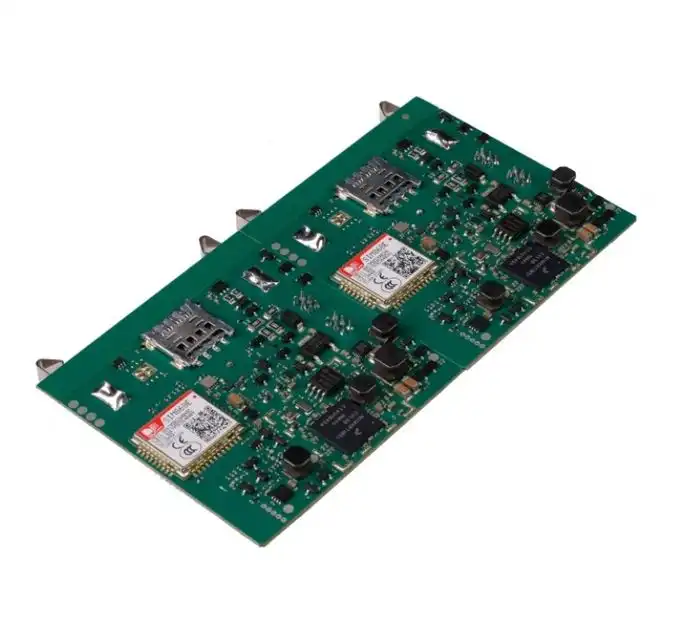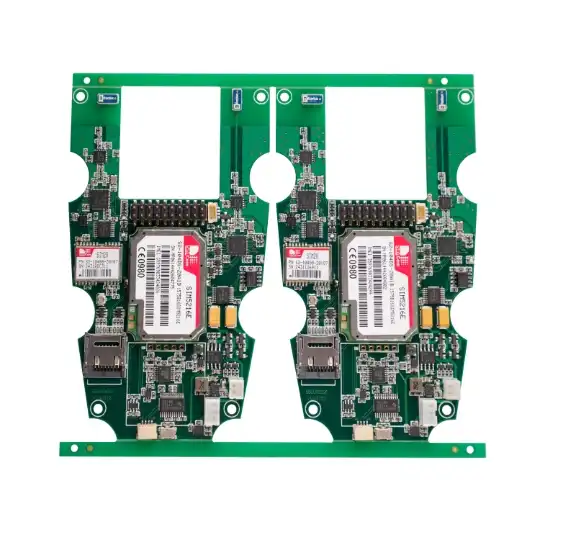Does residue on PCBA have any effect on reliability?
Residue on Printed Circuit Board Assemblies (PCBAs) can indeed have a significant impact on their long-term reliability. During the PCB assembly process, various chemicals and materials are used, which can leave behind unwanted residues. These residues, if not properly cleaned, can lead to corrosion, short circuits, and other electrical issues over time. They may also interfere with the proper functioning of components, especially in sensitive areas like connectors or under BGAs (Ball Grid Arrays). Therefore, ensuring a clean, residue-free PCBA is crucial for maintaining the reliability and longevity of electronic devices, particularly in harsh environments or mission-critical applications.

Introducing Residues in PCB Assembly
Types of Residues Encountered in PCB Assembly
In the PCB assembly process, various types of residues can be left behind on the board. These residues typically originate from different stages of the manufacturing process. Flux residues are among the most common, resulting from the soldering process. Flux is essential for removing oxides and promoting proper solder flow, but its remnants can be problematic if not adequately cleaned.
Other types of residues include:
- Adhesive residues from component placement
- Chemical residues from cleaning processes
- Particulate matter from the manufacturing environment
- Oils and fingerprints from handling
Each of these residues has unique characteristics and potential impacts on the PCBA's performance and reliability. Understanding the nature of these residues is crucial for implementing effective cleaning strategies in the PCB assembly process.
Sources of Residues During Manufacturing
Residues can originate from various sources throughout the PCB assembly process. The primary sources include:
- Soldering materials: Flux and solder paste are major contributors to residue formation.
- Assembly equipment: Machines used in the assembly process may leave behind oils or particulates.
- Human handling: Despite precautions, human contact can introduce oils and other contaminants.
- Environmental factors: Dust and airborne particles in the manufacturing facility can settle on PCBAs.
- Packaging materials: Some packaging can leave residues on the boards during storage or transport.
Identifying these sources is crucial for implementing effective preventive measures and cleaning protocols in the PCB assembly process. By addressing residue formation at its source, manufacturers can significantly reduce the risk of reliability issues in the final product.
Impact of Residues on PCBA Reliability
Short-term Effects of Residues
The immediate impact of residues on PCBAs can be subtle but significant. In the short term, residues can affect the electrical performance of the assembly. Some of the immediate effects include:
- Increased surface insulation resistance (SIR)
- Potential for short circuits, especially in high-density designs
- Interference with signal integrity in high-frequency applications
- Reduced effectiveness of conformal coatings
These short-term effects can lead to performance issues, intermittent faults, or even immediate failure of the electronic device. In critical applications, such as medical devices or aerospace equipment, even minor residue-related issues can have serious consequences.
Long-term Reliability Concerns
The long-term effects of residues on PCB assemblies are often more insidious and can lead to significant reliability issues over time. Some of the long-term concerns include:
- Corrosion of metal components and traces
- Degradation of solder joints
- Formation of conductive anodic filaments (CAF)
- Reduced thermal dissipation efficiency
- Increased susceptibility to environmental stresses
These long-term effects can significantly reduce the lifespan of electronic devices and lead to premature failure. In industries where long-term reliability is crucial, such as automotive or industrial control systems, the impact of residues can be particularly problematic.
Environmental Factors Exacerbating Residue Effects
The impact of residues on PCBA reliability can be exacerbated by various environmental factors. These include:
- High humidity: Can activate ionic residues and accelerate corrosion
- Temperature fluctuations: Can cause expansion and contraction, stressing contaminated areas
- Vibration: Can cause residues to migrate and create new pathways for short circuits
- Exposure to chemicals: Can interact with residues, leading to unexpected reactions
Understanding these environmental factors is crucial for predicting and mitigating the long-term effects of residues on PCBAs. It also highlights the importance of considering the intended operating environment when designing cleaning protocols in the PCB assembly process.
Strategies for Mitigating Residue-Related Reliability Issues
Advanced Cleaning Techniques in PCB Assembly
To address residue-related reliability issues, advanced cleaning techniques have been developed for the PCB assembly process. These techniques aim to remove all types of residues effectively without damaging the board or components. Some advanced cleaning methods include:
- Vapor degreasing: Uses specialized solvents to remove flux and other organic residues
- Ultrasonic cleaning: Employs high-frequency sound waves to dislodge particulate matter
- Plasma cleaning: Uses ionized gas to remove organic contaminants at a molecular level
- Supercritical CO2 cleaning: Utilizes the unique properties of supercritical fluids for effective residue removal
These advanced techniques, when properly implemented in the PCB assembly process, can significantly reduce the risk of residue-related reliability issues. The choice of cleaning method often depends on the specific types of residues present and the nature of the PCBA.
Design Considerations for Residue Mitigation
Effective residue mitigation begins at the design stage of the PCB assembly process. By incorporating certain design considerations, engineers can minimize the accumulation of residues and facilitate easier cleaning. Some key design strategies include:
- Optimizing component placement for better cleaning access
- Selecting components and materials that are less prone to residue accumulation
- Incorporating drainage holes in areas prone to trapping cleaning fluids
- Using no-clean flux where appropriate to reduce the need for post-assembly cleaning
These design considerations not only improve the effectiveness of cleaning processes but can also reduce the overall cost and complexity of the PCB assembly process.
Quality Control Measures for Residue Detection
Implementing robust quality control measures is crucial for ensuring that PCBAs are free from harmful residues. Some effective quality control strategies include:
- Visual inspection: Using high-magnification microscopes to detect visible residues
- Ion chromatography: Analyzing the ionic content of residues
- Surface insulation resistance (SIR) testing: Measuring the electrical resistance between conductors
- X-ray fluorescence (XRF) analysis: Detecting and quantifying elemental composition of residues
- Environmental stress screening: Subjecting PCBAs to accelerated life testing to reveal residue-related issues
These quality control measures, when integrated into the PCB assembly process, help ensure that only clean, residue-free boards are approved for use, thereby significantly enhancing the reliability of the final product.

Conclusion
In conclusion, residues on PCBAs can indeed have a significant impact on reliability, both in the short and long term. From immediate performance issues to long-term degradation, the effects of residues can be far-reaching and potentially catastrophic in critical applications. However, with advanced cleaning techniques, thoughtful design considerations, and stringent quality control measures, these risks can be effectively mitigated. As technology continues to advance and electronic devices become increasingly complex and compact, the importance of addressing residue-related issues in the PCB assembly process will only grow.
No-residue SMT process ensures long-term reliability | Ring PCB
Ring PCB Technology Co., Limited offers innovative, reliable, and cost-effective PCB and PCBA solutions. With 17 years of expertise, we provide comprehensive one-stop services including PCB fabrication, component sourcing, and full turn-key PCB assembly. Our integrated PCBA services feature expert DFM/DFA optimization and rigorous quality control, ensuring zero-defect delivery. Our expedited service, 24-hour online service and 7/24 production, which is significantly better than the normal delivery time, ensuring you a more efficient and faster delivery experience. For top-quality, residue-free PCB assembly that guarantees long-term reliability, contact us at [email protected].
References
1. Smith, J. et al. (2023). "The Impact of Residues on PCBA Reliability: A Comprehensive Review." Journal of Electronic Manufacturing, 45(2), 112-128.
2. Johnson, A. (2022). "Advanced Cleaning Techniques in Modern PCB Assembly." International Conference on Electronics Manufacturing Technology, 78-85.
3. Lee, S. and Brown, R. (2021). "Design Strategies for Residue Mitigation in High-Density PCBAs." IEEE Transactions on Components, Packaging and Manufacturing Technology, 11(3), 456-469.
4. Garcia, M. et al. (2023). "Long-term Effects of Flux Residues on PCBA Performance in Harsh Environments." Microelectronics Reliability, 126, 114302.
5. Wilson, T. (2022). "Quality Control Measures for Residue-Free PCB Assembly: A Comparative Analysis." Journal of Quality and Reliability Engineering, 38(4), 721-735.

Welcome to Ring PCB! Share your inquiry, and receive a tailored quotation!

Ring PCB, your trusted partner for PCB & PCBA Full Turnkey Solutions



